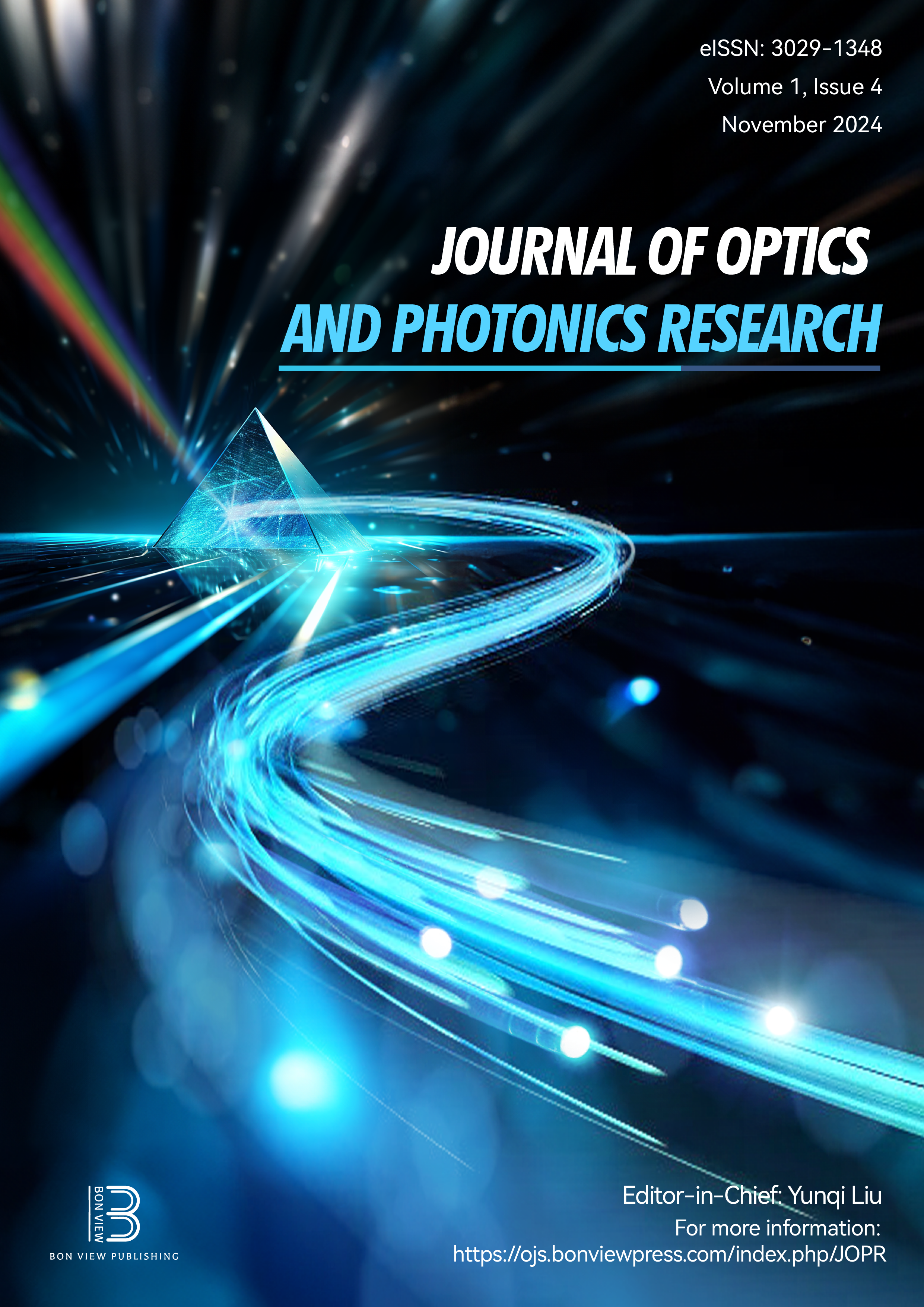Investigating Isogyres in Ferrofluids and Horocycles from Parlaseric Circle in a Ferrocell
DOI:
https://doi.org/10.47852/bonviewJOPR42022329Keywords:
isogyres, luminous horocycles, parlaseric circle, Ferrocell, ferrofluidAbstract
This study explored the complex relationship between magnetic fields and light polarization in thin films of ferrofluid. Utilizing techniques such as polarized light imaging, multipolar expansion, and Mueller matrix formalism, this work investigated the formation of isogyres, which are distinct patterns observed when polarized light passes through the ferrofluid under various magnetic field configurations. The analysis revealed that the alignment of nanoparticles in response to the magnetic field resulted in the formation of a diffraction grating, influencing light polarization. Through the application of Stokes vectors and Mueller matrices, we gained insights into the complex interplay between magnetic fields and optical properties. The experiment presents the evolution of isogyres from straight lines to parabolas under the influence of a hexapolar magnetic field. The Mueller matrix effectively represented the magnetic field's impact on polarized light, highlighting dark regions corresponding to isogyres. We also report the formation of some patterns related to atmospheric optics and their analogy with the formation of patterns of the parlaseric circle and the luminous horocycle.
Received: 19 December 2023 | Revised: 18 January 2024 | Accepted: 5 February 2024
Conflicts of Interest
The authors declare that they have no conflicts of interest to this work.
Data Availability Statement
The data that support the findings of this article are available in the images of this article and in its references [1, 32, 33, 35].
Author Contribution Statement
Alberto Tufaile: Conceptualization, Methodology, Software, Validation, Formal analysis, Investigation, Resources, Data curation, Writing – original draft, Writing – review & editing, Visualization, Supervision, Project administration. Adriana Pedrosa Biscaia Tufaile: Conceptualization, Methodology, Validation, Formal analysis, Resources, Data curation, Writing – review & editing, Visualization, Project administration.
Downloads
Published
Issue
Section
License
Copyright (c) 2024 Authors

This work is licensed under a Creative Commons Attribution 4.0 International License.


